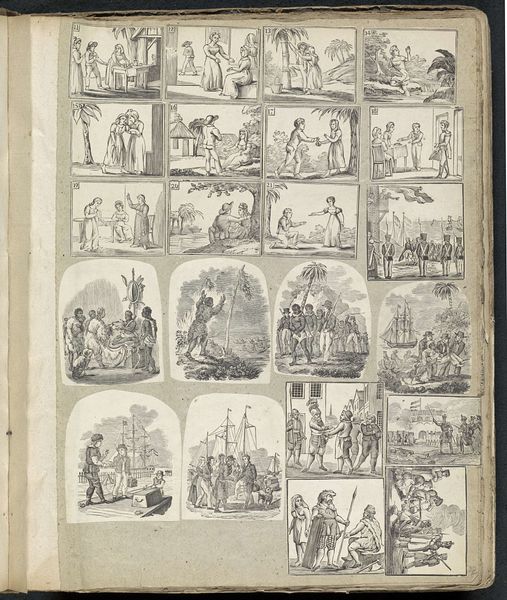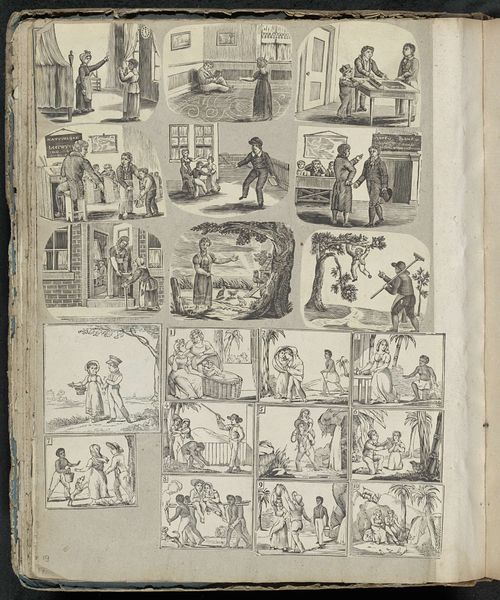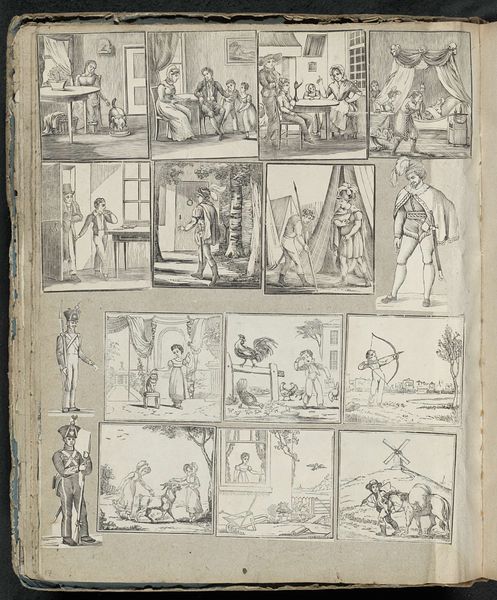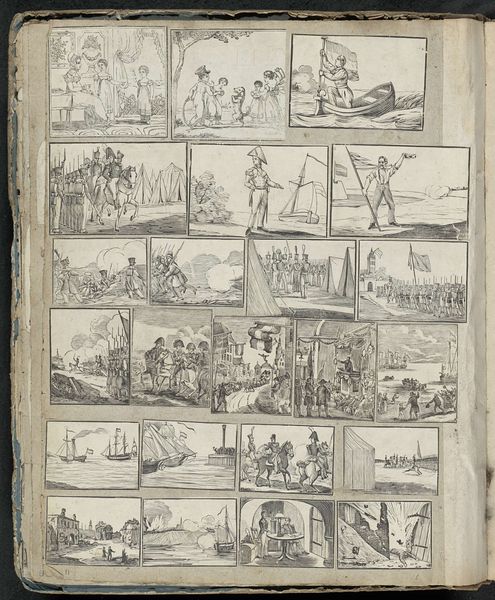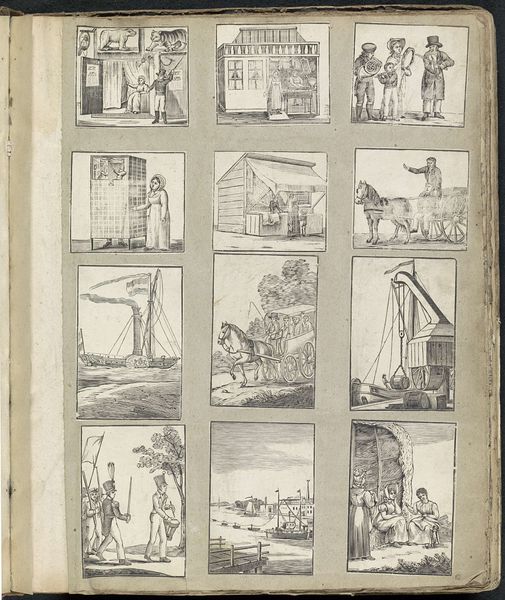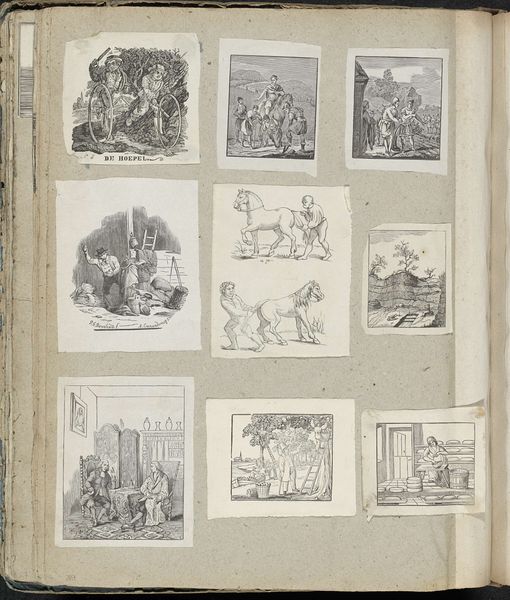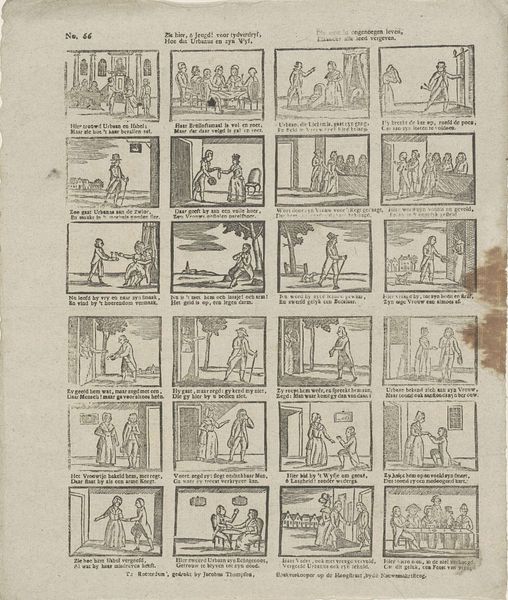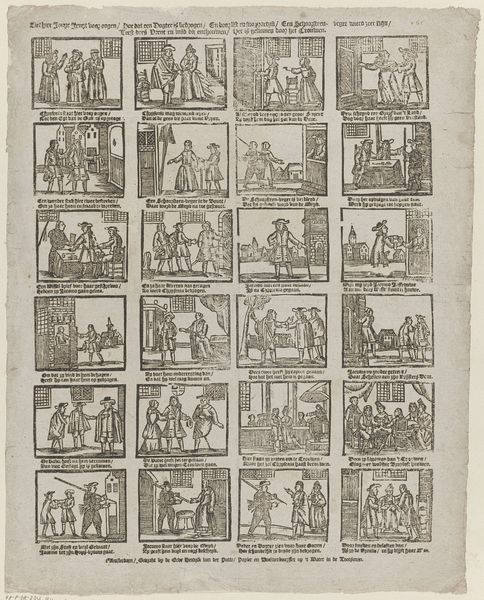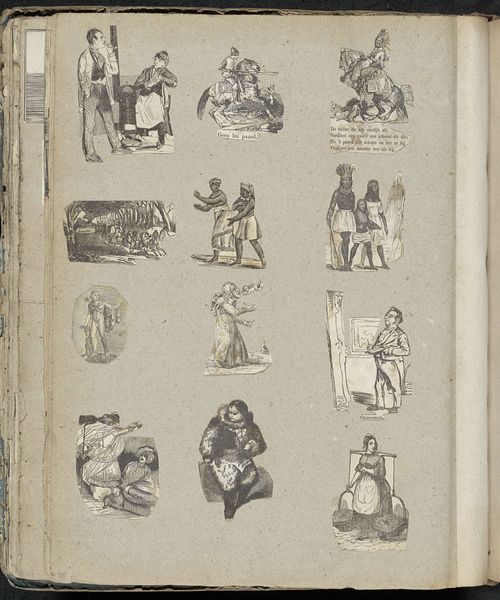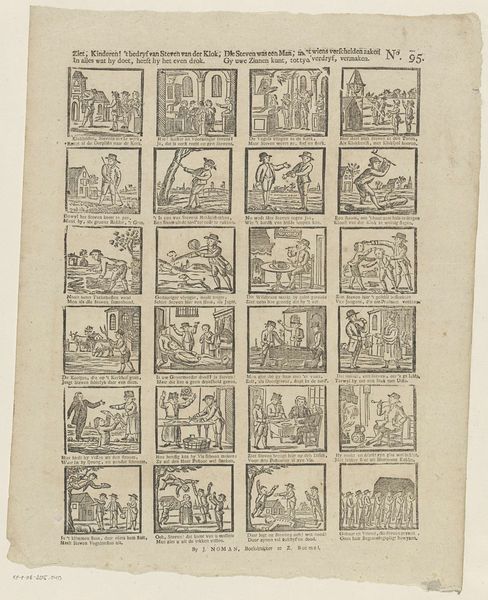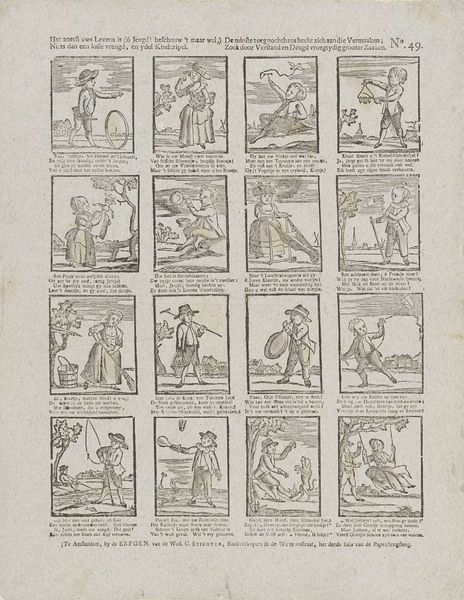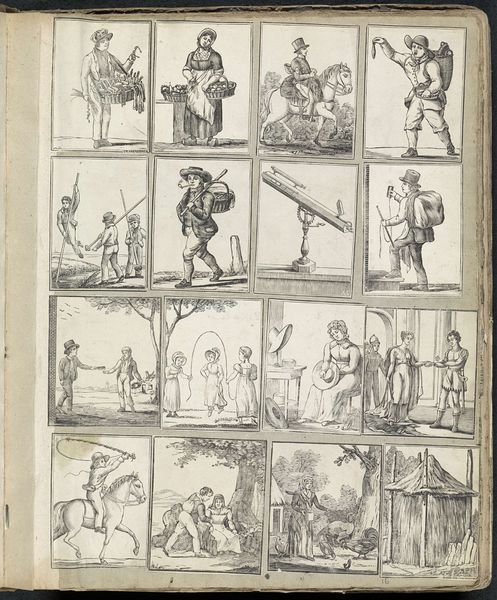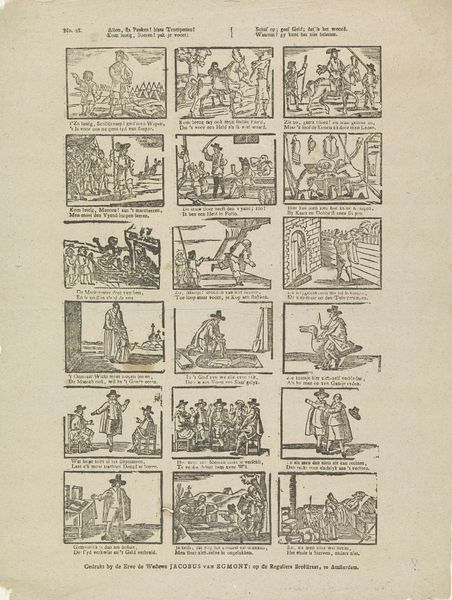
drawing, paper, ink, pencil
#
portrait
#
drawing
#
narrative-art
#
landscape
#
paper
#
ink
#
pencil
#
genre-painting
#
miniature
Dimensions: height 395 mm, width 331 mm
Copyright: Rijks Museum: Open Domain
Curator: This intriguing album page from between 1814 and 1869, attributed to Alexander Cranendoncq, presents a delightful array of scenes executed in pencil and ink on paper. Editor: My immediate impression is one of curiosity. There’s such a range of subjects compressed onto this single page—military scenes, genre paintings, even animals! It feels like a miniature encyclopedia, almost. Curator: Precisely. Each vignette acts as a tiny window into the world. Look at the repeated use of military iconography: the soldiers, the cannons... Clearly, the Napoleonic era left a significant mark on the visual imagination. The recurring figure of the soldier in various states possibly speaks to anxieties of war. Editor: And consider the materiality: the deliberate use of pencil and ink, suggesting perhaps sketches from life, quickly rendered. This also hints at accessible production. It suggests perhaps not commissioned artwork, but studies of subjects who piqued his interests, available cheaply for personal consumption. Curator: That’s insightful. These were undoubtedly images created and enjoyed amidst a rising middle class hungry for accessible imagery. There's even a conscious embrace of the miniature. The scale reinforces this sense of intimacy, echoing memory. They're not just pictures but mnemonic devices. Editor: Absolutely. The close observation of various social types as well speaks volumes. And that touch of exoticism in those depictions of other cultures; even the strange composite image of a seal is intriguing. The accumulation and cataloging is fascinating—reflecting colonial desires. Curator: Yes, that tension between documentation and categorization is present throughout. This is no mere collection of images; it's a statement about ordering, seeing, and processing the world. We might ask: what story, in totality, is being built across these individual works? Editor: From the perspective of process, I am equally fascinated by the labor implied: how much time was allocated to this single album page? And where might we place this piece within the wider circulation of images that emerged from popular prints in 19th-century Europe? Curator: The range of subject matter speaks, I think, to a very typical tension between narrative and portraiture. There are anecdotal representations here, contrasted with precise capturing of the military characters’ essence through stance and costume. Editor: Overall, this image acts almost as a fascinating testament to an artist wrestling with an influx of a huge volume of imagery made possible by new reproductive technologies of the era. The images here offer just an outline of an artist grappling with his time.
Comments
No comments
Be the first to comment and join the conversation on the ultimate creative platform.
